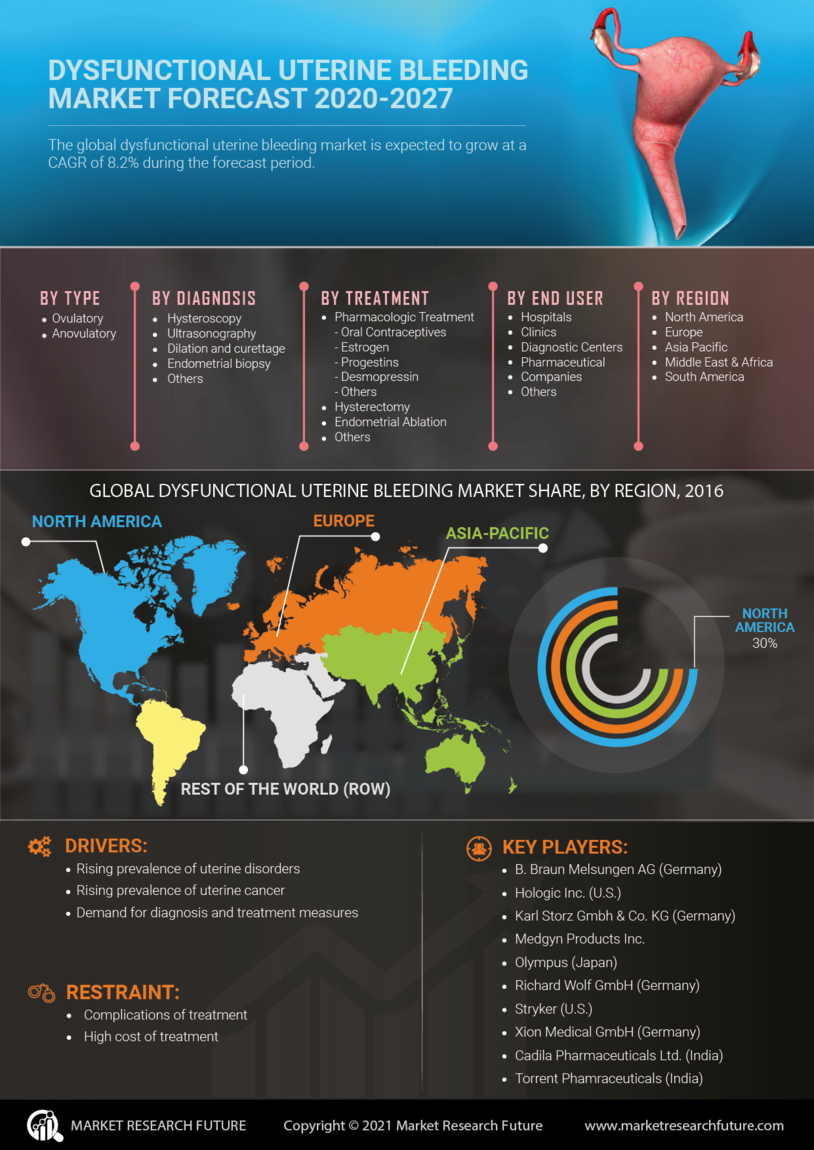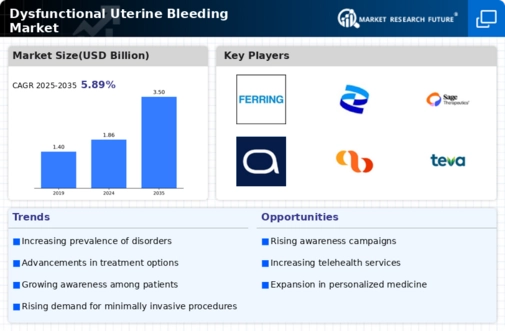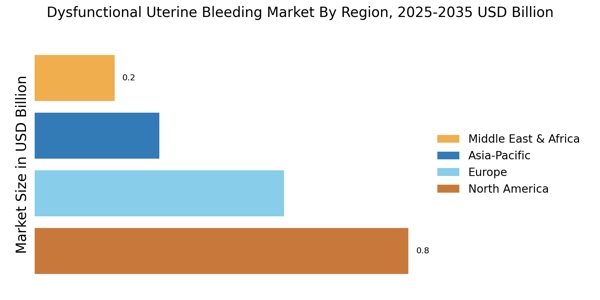Increased Awareness and Education
The growing awareness and education surrounding women's health issues, particularly dysfunctional uterine bleeding, are pivotal drivers of the Dysfunctional Uterine Bleeding Market. Campaigns aimed at educating women about reproductive health have gained momentum, leading to increased recognition of symptoms and the importance of seeking medical help. This heightened awareness is reflected in the rising number of consultations and diagnoses related to uterine bleeding. According to recent surveys, nearly 40% of women report discussing menstrual health with healthcare providers, indicating a shift towards proactive health management. As more women become informed about their health, the demand for effective treatments is likely to rise, thereby propelling the Dysfunctional Uterine Bleeding Market. This trend underscores the importance of continued education and outreach efforts in promoting women's health.
Advancements in Medical Technology
Technological advancements in medical devices and treatment methodologies are significantly influencing the Dysfunctional Uterine Bleeding Market. Innovations such as minimally invasive surgical techniques and advanced imaging technologies have transformed the management of uterine bleeding. For instance, the introduction of hysteroscopic procedures allows for precise diagnosis and treatment, reducing recovery times and improving patient outcomes. Furthermore, the integration of artificial intelligence in diagnostic tools enhances the accuracy of identifying underlying causes of dysfunctional uterine bleeding. As these technologies become more accessible, healthcare providers are likely to adopt them, thereby expanding the market. The ongoing research into new therapeutic agents, including novel hormonal treatments, also indicates a promising future for the Dysfunctional Uterine Bleeding Market, as these advancements may lead to more effective and personalized treatment options.
Rising Prevalence of Uterine Disorders
The increasing incidence of uterine disorders, including dysfunctional uterine bleeding, is a primary driver of the Dysfunctional Uterine Bleeding Market. Studies indicate that approximately 30% of women experience some form of abnormal uterine bleeding during their reproductive years. This rising prevalence necessitates effective treatment options, thereby propelling market growth. As awareness of uterine health improves, more women seek medical advice, leading to higher diagnosis rates. Consequently, healthcare providers are compelled to offer a wider array of therapeutic solutions, including hormonal therapies and surgical interventions. The demand for innovative treatments is likely to escalate, further stimulating the Dysfunctional Uterine Bleeding Market. This trend suggests a growing recognition of women's health issues, which could lead to increased funding for research and development in this area.
Growing Demand for Non-Invasive Treatment Options
The increasing preference for non-invasive treatment options among patients is shaping the Dysfunctional Uterine Bleeding Market. Women are increasingly seeking alternatives to traditional surgical procedures, favoring treatments that minimize recovery time and reduce complications. Non-invasive therapies, such as hormonal treatments and endometrial ablation, are gaining traction due to their effectiveness and lower risk profiles. Market data suggests that the demand for these options is on the rise, with a notable increase in prescriptions for hormonal therapies in recent years. This shift in patient preference is likely to drive innovation in the market, as manufacturers and healthcare providers respond to the need for safer and more effective treatment modalities. Consequently, the Dysfunctional Uterine Bleeding Market may witness a transformation as it adapts to these evolving patient expectations.
Regulatory Support and Funding for Women's Health Research
Regulatory support and increased funding for women's health research are crucial factors influencing the Dysfunctional Uterine Bleeding Market. Governments and health organizations are recognizing the need to address women's health issues, leading to the allocation of resources for research and development. Initiatives aimed at understanding the underlying causes of dysfunctional uterine bleeding and developing new treatment options are gaining traction. This support not only fosters innovation but also encourages collaboration between academic institutions and the healthcare industry. As funding for research expands, the potential for breakthroughs in treatment options increases, which could significantly impact the Dysfunctional Uterine Bleeding Market. This trend indicates a growing commitment to improving women's health outcomes and addressing the challenges associated with uterine disorders.


















Leave a Comment